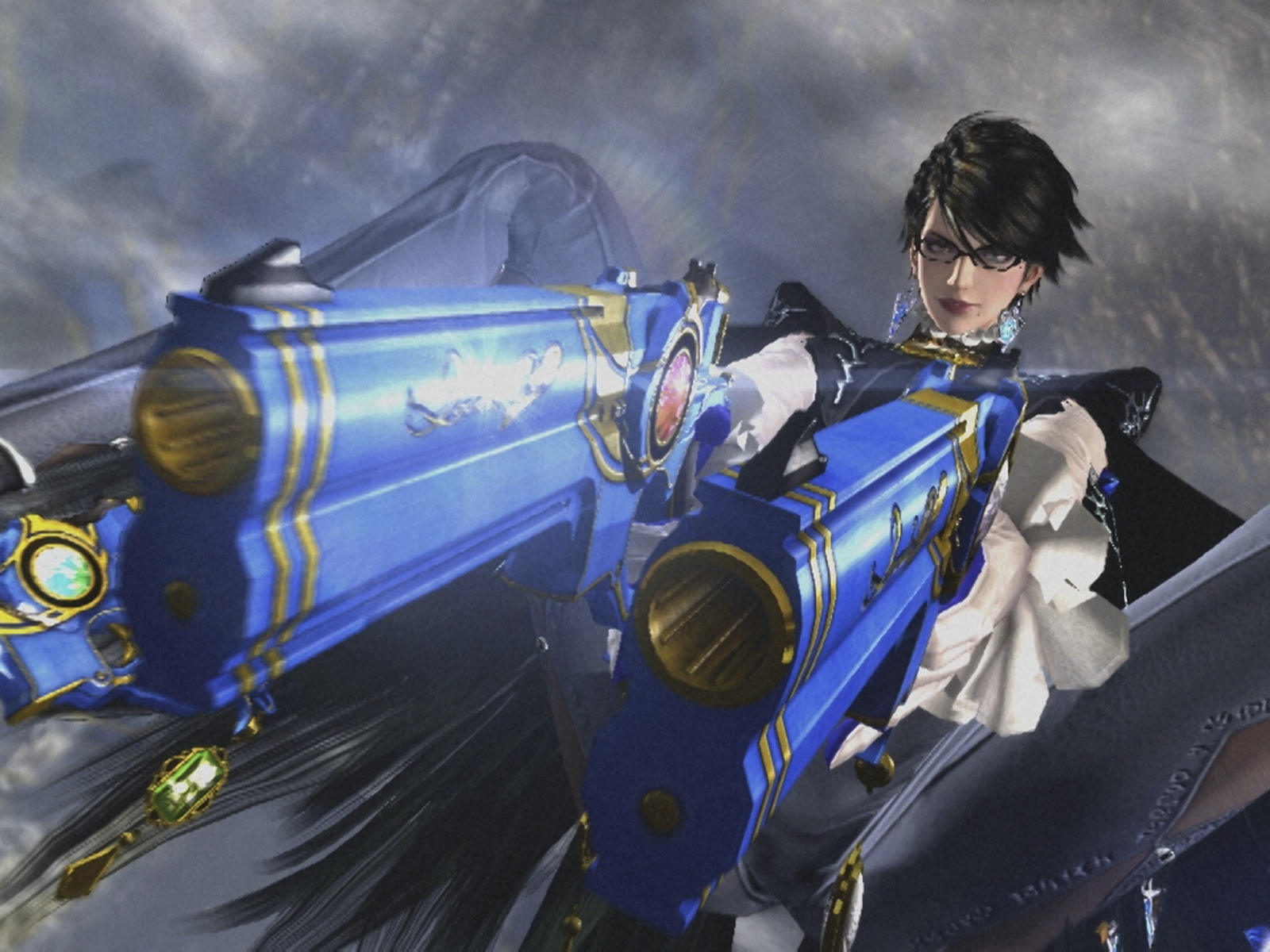
Platinum Games has finally delivered a sequel to 2010’s character-action game “Bayonetta,” allowing the hungry fanbase to gorge on all the gun kata combos they could possibly want. “Bayonetta 2” arrived on Oct. 24 exclusively to the Wii U — much to the chagrin of a public used to playing the original on XBox 360 and Playstation 3 — and has since been surfing on an ocean of near-perfect reviews ever since. Funded by Nintendo and pushed forward by the sheer will of Team Little Angels, the game is exclusive to what is objectively the weakest console of the current generation. The question is: Does the game manage to hold up in spite of this?
Like its predecessor, “Bayonetta 2” has a storyline that is almost entirely incomprehensible. Following the events of the original in which Bayonetta defeated the godlike Jubileus and recovered her memories, the sequel finds her acclimating to life as an Umbra Witch and readying a Christmas party with fellow witch Jeanne (yes, the plot begins with party-planning). After a sudden attack by angels, the titular witch finds herself unable to control one of her demonic familiars and Jeanne sacrifices herself to save Bayonetta. From here on out, the goal of the game becomes an effort to save Jeanne from her damned fate, all the while contending with demons, angels and a mysterious third party, all seemingly intent on stopping her. It is at this point that motivations in the game become muddled to the player, and keeping track of everybody’s character histories and allegiances is a losing battle.
It is important to keep in mind that the storyline of “Bayonetta 2” is far from being the focus of the game. As with any character-action experience, the goal of the game is to master play with Bayonetta’s specific movesets and all of the weapon-based variations she can pick up along the way. Movement from one combo to another is emphasized, as each attack feels wonderfully fluid to execute, stitching together light attacks with heavy ones to keep scores high and earn more halos (used as currency in the demon-run bar Gates of Hell). Without an ability to block, combat makes use of the idea of Witch Time, whereby a dodge at the last minute is rewarded with a burst of magical power, slowing all the action on screen to a near halt for a few seconds, and allowing the player a chance to rack up damage on helpless enemies.
New to this battle system is the touch-based automatic combos and the magical Umbran Climax. If played with the tablet controller that comes with the console, the player is granted the ability to touch enemy models on the secondary screen and combo them automatically, limiting human error. Unfortunately, this same mechanic too easily makes combat in the game trivial and is better left unused (feeling more comfortable on the Pro Controller anyway), challenging the player to learn the systems well. Umbran Climax is a feature that comes as an extension of the Umbra Witch powers used by Bayonetta since the first game. This allows the player to enter a powered-up state where every attack Bayonetta initiates has the strength normally reserved for the coup de grace strikes that end each combo.
Running on a Nintendo system had also initially worried the more stalwart fans of the series, threatening not to run at the frame-rate necessary to maintain frame-linked combos and execute the dodges in the split-second timing required. Fortunately, during the entirety of my time with the game, the frame rate only ever dropped twice in moments where the screen was flooded with effects in both fore and background, leaving me with only a momentary distraction and then going right back to normal. As well as running as expected, the game looks great, sporting an art style that is charming and lends itself well to a universe where tearing angels limb from limb is all a part of the daily grind for a witch.
Replayability in “Bayonetta 2” is incredibly high, presenting players with a challenging, but still fairly easy game on the basic difficulty of Second Climax, and rating the performances on each stage with a scale of stone medal to pure platinum. Gamers are encouraged to replay levels in which they performed poorly by rewarding them with halos necessary to learning more combat techniques and equippable items. There are also easily missable challenge rooms and collectables that can be found to upgrade Bayonetta with new weapons, enhanced health and magic, lore and accessories. Coupled with Platinum’s previous game “The Wonderful 101,” this game console is well on its way to having some of the best character-action games available for this generation.
Rating: 4.5 stars








